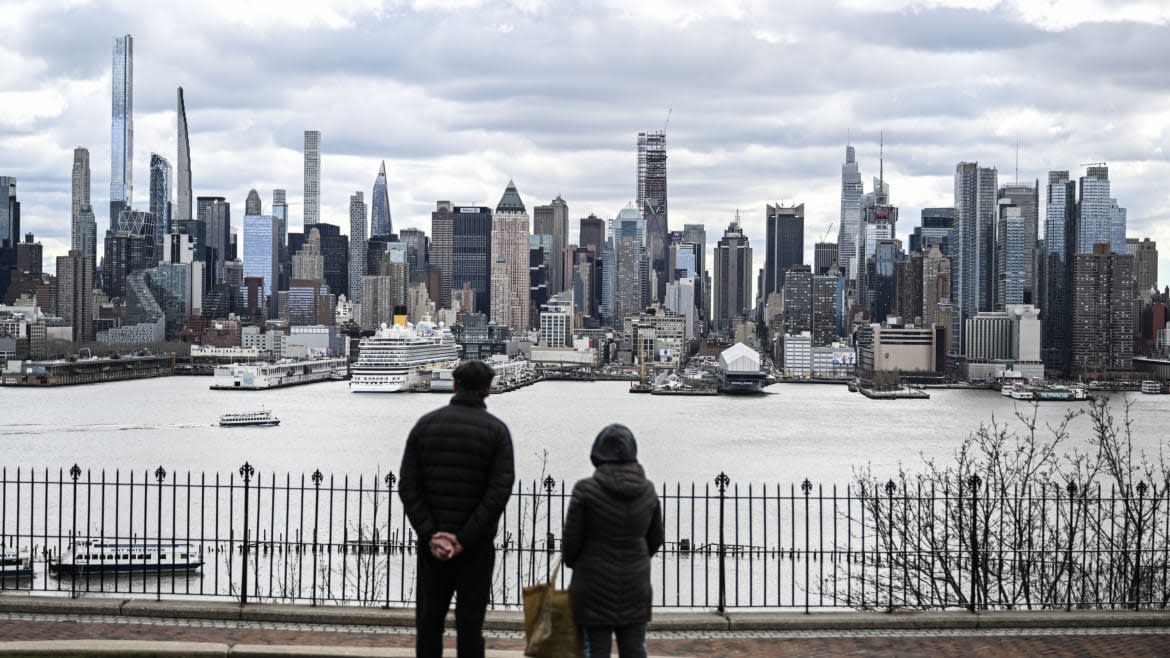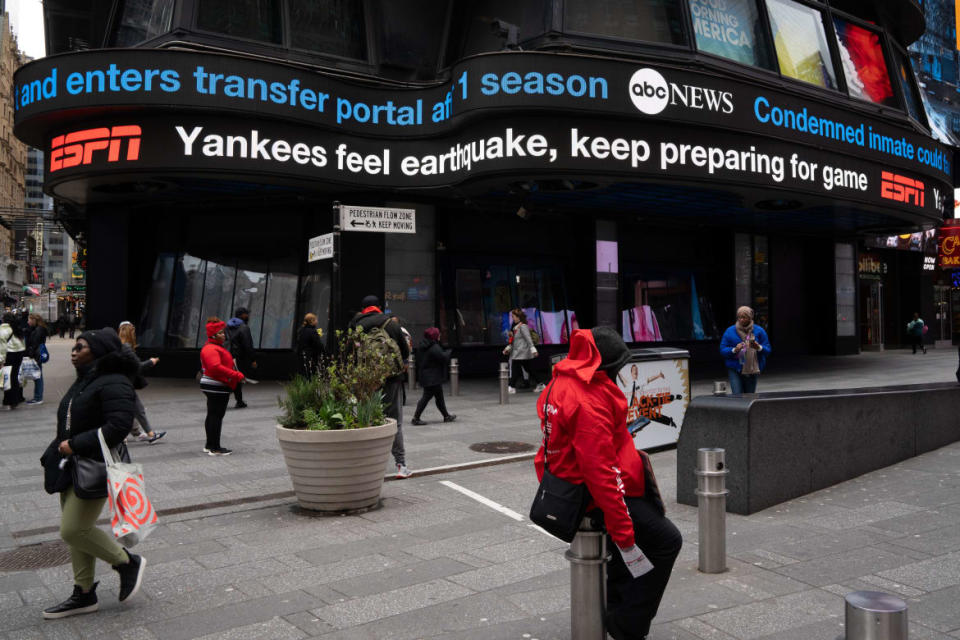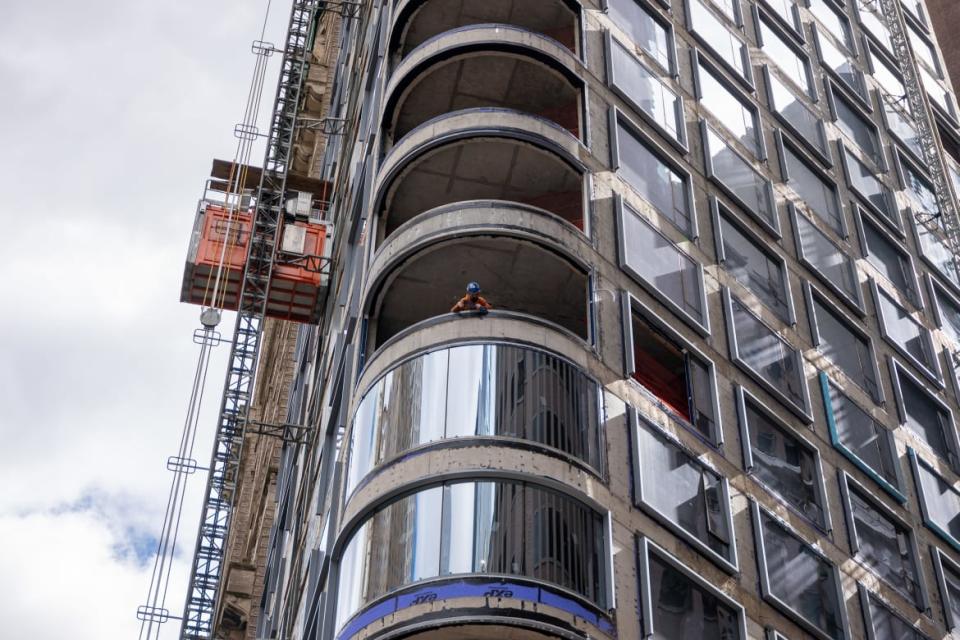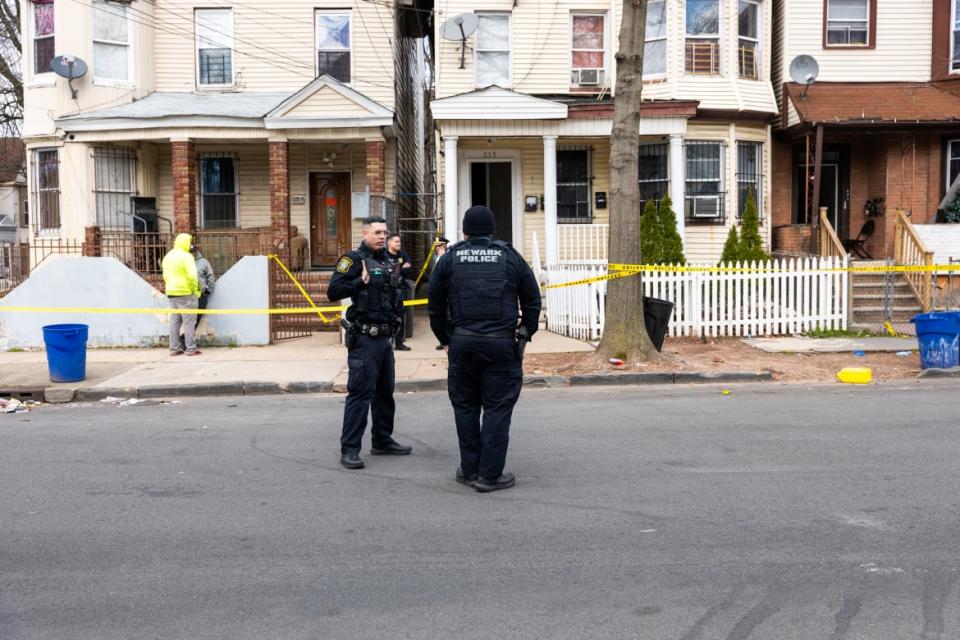Does the East Coast Earthquake Mean the Big One Is Coming?

The 4.8-magnitude earthquake that rattled the New York City area and frayed residents’ nerves on Friday morning was the biggest temblor to hit the region in nearly 150 years—and experts say it’s well past time to start taking the seismic threat seriously.
According to the New York City Area Consortium for Earthquake Loss Mitigation (NYCEM), “thousands” of earthquakes with magnitudes of 2.0 or greater have occurred in New York State over the past few centuries and there is a 20 to 40 percent chance of a 5.2 magnitude earthquake occurring within the next 50 years, and “[c]atastrophic events with Magnitudes 6 and larger are possibilities.”
“Even a moderate event (Magnitude 6) could result in an estimated 1,110-1,200 deaths, as well as igniting up to 900 fires simultaneously in the NY-NJ-CT region,” a 2003 NYCEM study warned. “Considering the large population (18.5 million) and the region’s building inventory (predominantly unreinforced masonry), it is clear that even a moderate earthquake would have critical consequences on public safety and the economy of this area.”
It is impossible to predict when the “big one” will come, but it’s a distinct possibility at some point in the future, structural geologist Folarin Kolawale told The Daily Beast.
“We need to care more about earthquakes than we did before,” said Kolawale, an assistant professor in the Department of Earth and Environmental Sciences at Columbia University. “This event, and historical events, suggest that we can have magnitude-5 earthquakes at less than 10 kilometers depth in the New York area, and that is important. We should definitely have more preparedness going on than what exists. Buildings should be fortified. Tunnels should be fortified. And most importantly, we need to monitor earthquakes better.”

A digital ticker tape board at Times Square displays the news of a 4.8 magnitude earthquake on April 5, 2024 in New York City.
The epicenter of Friday’s quake was pinpointed near the Ramapo Fault in New Jersey, roughly 50 miles west of New York City and about 60 miles north of Philadelphia, according to the United States Geological Survey (USGS). It occurred 2.9 miles below ground at 10:23 a.m.; New York City officials sent out an emergency alert at 10:49 a.m., nearly a half-hour later. By then, the news had already spread far and wide via social media and word-of-mouth. (The city’s emergency management commissioner said his office needed time to determine whether or not the event was in fact an earthquake before issuing the alert.) There was no major damage or serious injuries reported.
“New Yorkers should go about their normal day,” Mayor Eric Adams said at a news conference following the quake.
A minor 2.0-magnitude aftershock took place near Bedminster, New Jersey, home of a golf club belonging to former President Donald Trump, and Adams cautioned that further aftershocks could still occur. Kolawale said there have been “small events” recorded around the Ramapo Fault before, adding, “And now we’ve seen a bigger one.”
“We need to pay closer attention to the fault lines that exist,” he argued on Friday. “We need to monitor more. We really need to.”
A 4.8 magnitude quake is not considered “a big one,” though it’s not far off from meeting that threshold, Kolawale said.
“I would call anything magnitude 5 or greater a ‘big one,’” he went on. “Starting at 5, that’s a big one. So this is close to a big one. But it is big enough to [get] our attention.”
Friday’s quake happened during Kolawale’s weekly lab research meeting with his students and postdocs, and everyone knew immediately what was happening, he said. And while it was, thankfully, not a catastrophic event, Kolawale said it was “important and significant because it was the largest magnitude we’ve had in a long time in this region.”
The largest prior earthquake in the area, at a magnitude of 5.3, occurred in 1884, with an epicenter just south of Long Island, according to Kolawale. He said small earthquakes in areas including New York City do happen, although they are generally too weak to generate much notice. There was a 1.7-magnitude quake centered in Astoria, Queens in January, a 2.4-magnitude quake in 2001, and a 2.6 in 2002, with epicenters around Central Park. Since 1957, the USGS has documented 188 earthquakes of magnitude 2.5 or higher within a 250-mile radius of New York City, with seven above 4.5.
To Kolawale, the small quakes “tell us we should be prepared for a bigger one.”

A worker peers out from a worksite in lower Manhattan moments after New York City and parts of New Jersey experienced a 4.8 magnitude earthquake.
Today’s seismic activity emphasizes the fact that the New York area has significant enough faults to “accommodate big earthquakes,” and that “we do have activity on those faults,” Kolawale said. The Ramapo Fault is about 55 miles long, running from Pennsylvania, through New Jersey, and into Rockland County, with smaller, secondary faults branching off from it, according to Kolawale. It is “not uncommon” for ruptures of smaller faults to trigger larger earthquakes on those bigger faults nearby, he said.
Kolawale said a 4.8-magnitude quake is “very common” in a place like California, which has endured nearly 50 earthquakes of a 6.5 magnitude or higher in the past century. The Golden State “historically… has a lot of fours,” he noted, with its largest being a 7.9 in 1857. However, Kolawale emphasized, a 4.8 is “not unheard of [for New York], but it’s not common.”
Today’s 4.8 was likely not strong enough to cause serious damage to existing structures in New York City, according to geotechnical engineer Magued Iskander, professor and chair of the Civil and Urban Engineering Department at NYU’s Tandon School of Engineering.
“I’m pretty certain that we will have very limited impact as a result,” Iskander told The Daily Beast. “Earthquake scale is a logarithmic scale. So, if you remember your math, five is 10 times as big as four. And 4.9 is twice as strong as 4.8. Can we [withstand] numbers in the 5 and 6? Yes.”
Yet, “as you start going to higher and higher numbers, there will be a point that we fail to withstand the earthquake,” Iskander cautioned.
“Like, if you get an 8, for example, or 9, I mean, none of these brownstone structures will take that,” he said. “They were designed before [building] code existed for this type of thing.”

Newark, New Jersey residents and police gather outside of homes that were structurally damaged and had to be evacuated after the area experienced a 4.8 magnitude earthquake.
Most new structures are being designed to meet current building guidelines, which Iskander described as “reasonable.” Pragmatically speaking, it would be impossible to retrofit every building in New York to bolster their resistance to earthquakes, according to Iskander. At the same time, building codes in the city are evolving, “driven by what’s happening in California, to a large degree,” he said.
“As we learn about how to design better [earthquake protection], they get incorporated in the building codes,” Iskander continued. “But this event will not affect any building codes. It’s too small. Look at the earthquake in Turkey from last year; look at the recent Taiwan earthquake from two days ago. These are much more relevant events.”
And although his wife was evacuated from her office during this morning’s quake, said, “I don’t want to scare people. If you ask me, am I personally worried? No.” (Kolawale, for his part, said that when he felt the earthquake on Friday, he was not frightened but “excited.”)
One fundamental understanding that experts have about earthquakes in the New York region is that nearby faults “are pre-stressed,” according to Kolawale.
“We know that there are anthropogenic activities like quarry mining that can trigger earthquakes on pre-stressed faults,” he told The Daily Beast. “However, we also know that just natural tectonic forces can trigger earthquakes on these faults.”
It’s hard to say what people should do at this point to try and prevent, or prepare for, “the big one,” Kolawale said. Still, he noted, a good start would be to gather more data, do more monitoring, and dive deeper into the resultant analysis to provide better and more accurate seismological forecasts.
“At this point, it’s difficult without more studies,” Kolawale said. “We have projects, we’re trying to better understand the processes happening. But it’s been slow, because of funding challenges. You know, until you have a big one, nobody really wants to fund the small ones.”
Get the Daily Beast's biggest scoops and scandals delivered right to your inbox. Sign up now.
Stay informed and gain unlimited access to the Daily Beast's unmatched reporting. Subscribe now.

